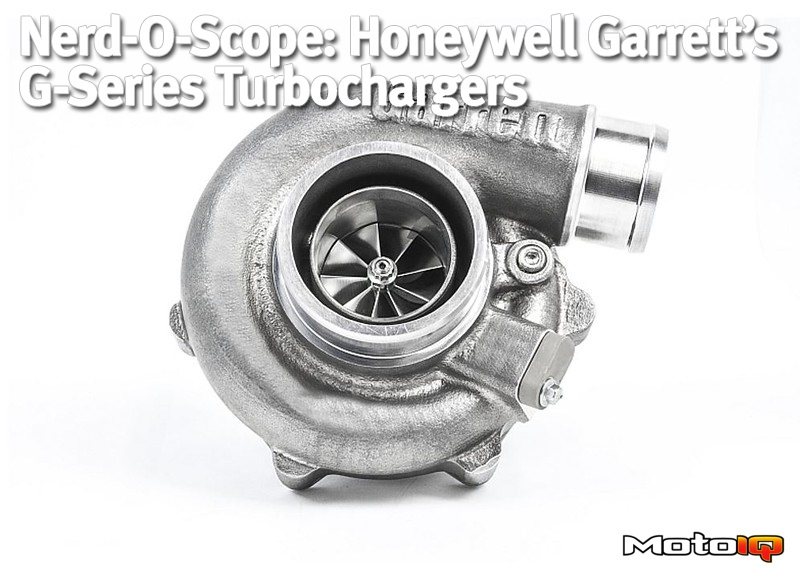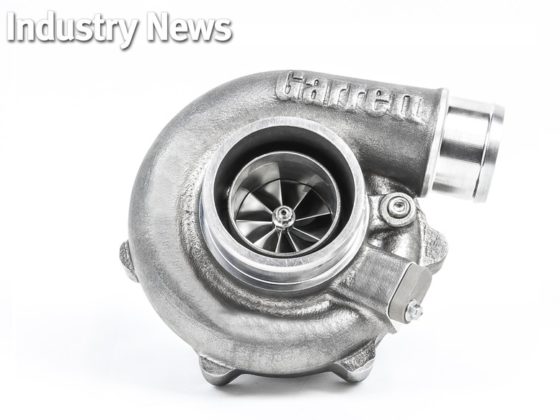,
 This cutaway view of the center housing shows the guts. Here you can see where the ball bearing sits in the middle and is fed oil from the oil inlet. After the oil goes through the ball bearing, the oil goes down and out of the oil drain. You can also see the water core cast around the turbine side of the center housing which is the hottest side of course. Garrett has a great white paper on the importance of water cooling the center housing for long term durability.
This cutaway view of the center housing shows the guts. Here you can see where the ball bearing sits in the middle and is fed oil from the oil inlet. After the oil goes through the ball bearing, the oil goes down and out of the oil drain. You can also see the water core cast around the turbine side of the center housing which is the hottest side of course. Garrett has a great white paper on the importance of water cooling the center housing for long term durability.
 When you hook up the water lines, you ideally want the cold coolant feed going in the lower port and the hot coolant going out the opposite side upper port. While not as ideal, you can have the hot coolant exiting above the feed port on the same side. The key is to have the cold feed into the lower port in order for the thermal siphoning effect to work properly.
When you hook up the water lines, you ideally want the cold coolant feed going in the lower port and the hot coolant going out the opposite side upper port. While not as ideal, you can have the hot coolant exiting above the feed port on the same side. The key is to have the cold feed into the lower port in order for the thermal siphoning effect to work properly.
 I grabbed this screen shot from Garrett’s video feed from SEMA to show the volute shapes of the turbine and compressor housings. The volutes were squished down a bit to make the compressor and turbine housings as compact as possible. The volute shape of the compressor housing is reminiscent of the shape used in the T04S housing used on the GT/GTX 82mm compressor wheel. The G-Series compressor housing also uses a matching 0.70A/R, which is a bump up from the 0.60 T04E housing used on the GT/GTX 76mm compressor wheel. The volute shape along with the 0.70 A/R aid in increasing flow.
I grabbed this screen shot from Garrett’s video feed from SEMA to show the volute shapes of the turbine and compressor housings. The volutes were squished down a bit to make the compressor and turbine housings as compact as possible. The volute shape of the compressor housing is reminiscent of the shape used in the T04S housing used on the GT/GTX 82mm compressor wheel. The G-Series compressor housing also uses a matching 0.70A/R, which is a bump up from the 0.60 T04E housing used on the GT/GTX 76mm compressor wheel. The volute shape along with the 0.70 A/R aid in increasing flow.

The G-Series will have internally wastegated and non-wastegated turbine housing options. The G-Series is available in both standard and reverse rotation. This picture is from our buddy Austin Cabot showing half of the Full-Race twin-turbo setup for a Ford V6 Ecoboost engine. Having standard and reverse rotation turbos allows for a nice symmetric setup on V-engines. Check out the internal wastegate actuator bracket which has slots to allow for some rotation/clocking options of the compressor housing relative to the turbine housing.
The Honeywell Garrett G-Series is a legit motorsports quality turbo with new features to address durability in the most extreme uses. The really impressive improvements are the drastic increases in compressor and turbine flows and efficiency from completely new aerodynamics. With turbochargers, the goal is to always maximize transient response. Honeywell Garrett was able to achieve significant transient response improvement by reducing inertia through the use of smaller diameter wheels while still providing the same power potential. Plus, with today’s cramped engine bays, the smaller turbos are easier to package. It’ll be exciting to see what these turbos can do!



